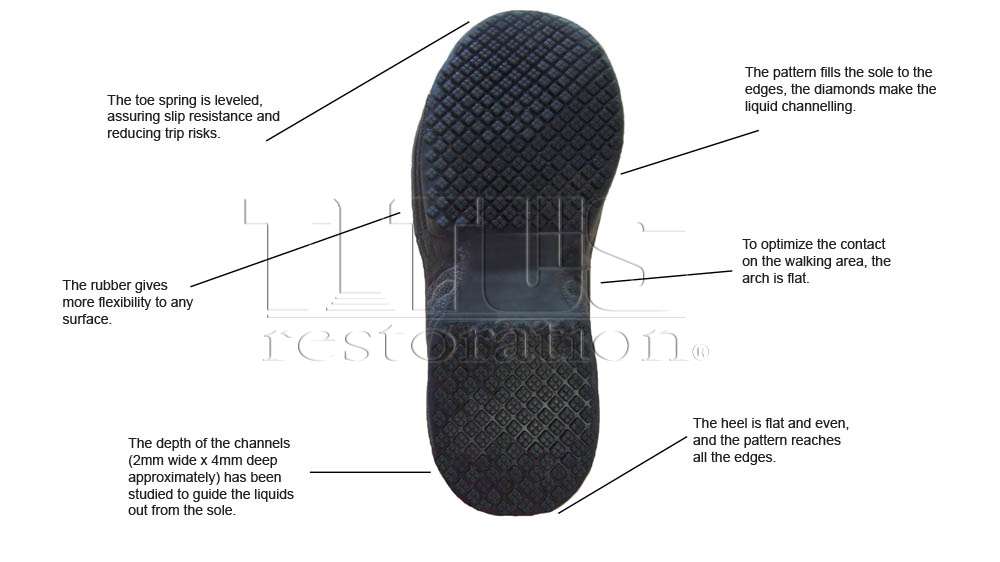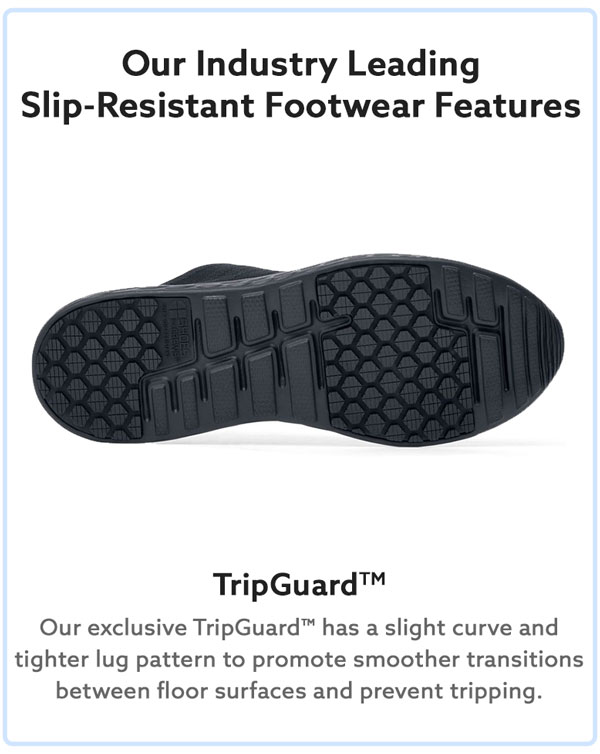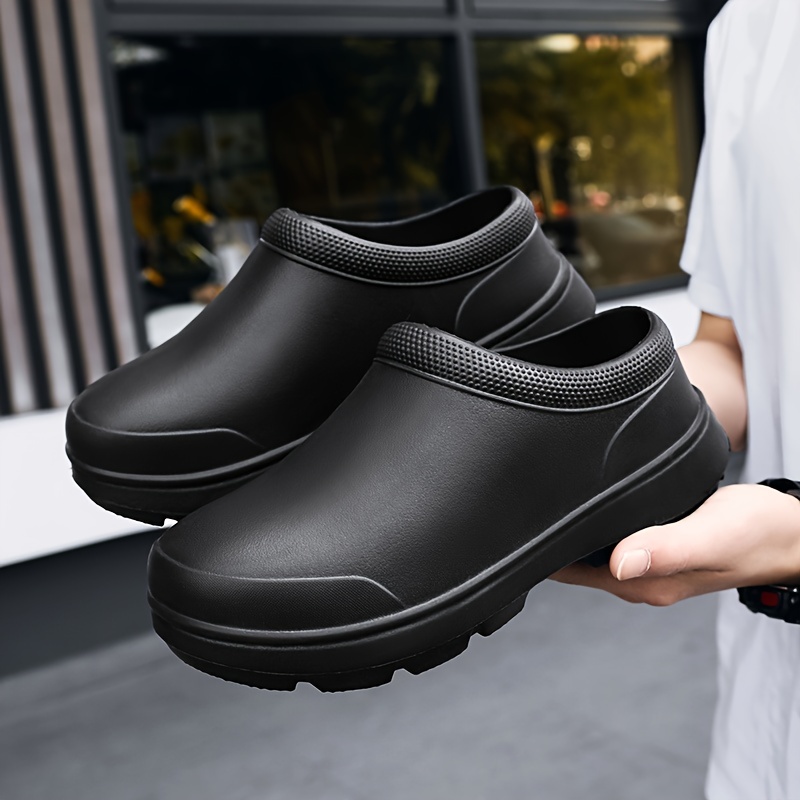In workplaces, safety is of utmost importance, and one often overlooked aspect is the footwear worn by employees. Slip and oil resistant shoes are essential for preventing accidents and ensuring stability, especially in industries like food service, healthcare, and manufacturing. This comprehensive guide will explore the significance of these shoes, the technologies behind them, and how to choose the right pair to keep you safe and comfortable on the job.
What are Slip and Oil Resistant Shoes?
Slip and oil-resistant shoes are specifically designed with soles that provide enhanced traction and grip on wet, oily, or slippery surfaces. These shoes help reduce the risk of slips and falls, which are common causes of workplace injuries. They are made using specialized materials and tread patterns that channel away fluids, providing better contact with the ground.
Why are Slip and Oil Resistant Shoes Important?
According to the U.S. Bureau of Labor Statistics, slips, trips, and falls account for nearly 30% of all workplace injuries. Investing in high-quality slip and oil-resistant footwear can significantly decrease the likelihood of these incidents, ensuring a safer work environment.
The Cultural Relevance of Safety Footwear in the USA
In the U.S., industries such as hospitality, construction, and healthcare have a longstanding culture of prioritizing employee safety. For instance, many restaurants enforce a strict footwear policy to protect staff from spills and hazards, demonstrating a commitment to safety. This reflects a broader cultural trend where safety measures are increasingly integrated into workplace protocols.
Key Features of Slip and Oil Resistant Shoes
Tread Design
The tread design is crucial in providing slip resistance. It often features deep grooves and channels that help remove liquids from the surface of the shoe.

Material Composition
These shoes typically utilize rubber or synthetic materials known for their durability and grip, resisting oils and chemicals that can compromise traction.
Comfort and Fit
Comfort is essential for workers who spend long hours on their feet. Slip and oil-resistant shoes often come with cushioned insoles and ergonomic designs.

How to Choose the Right Slip and Oil Resistant Shoes
Consider Your Industry
Depending on your field, the requirements for slip and oil-resistant shoes may vary. For instance, healthcare professionals may need shoes with additional support and breathability, while construction workers may require heavy-duty footwear.
Comfort vs. Safety
Always prioritize safety without compromising comfort. Look for shoes that meet industry standards while ensuring a comfortable fit.

Test for Traction
Before purchasing, testing shoes in a controlled environment can help gauge their slip-resistant properties. Many retailers encourage this kind of testing to ensure customer satisfaction.
Popular Brands of Slip and Oil Resistant Shoes
Here are some of the leading brands known for their slip and oil-resistant footwear:

| Brand | Notable Products | Special Features |
|---|---|---|
| Skechers | Skechers Work Sure Track | Memory foam insole, slip-resistant outsole |
| Dansko | Dansko Professional Clogs | High arch support, oil-resistant sole |
| Crocs | Crocs Bistro | Easy to clean, slip-resistant tread |
| Timberland | Timberland PRO | Steel toe, waterproof, slip-resistant |
Pros and Cons of Slip and Oil Resistant Shoes

Pros
- Enhanced Safety: Reduces the likelihood of slips and falls.
- Durability: Designed to withstand challenging environments.
- Comfort: Ergonomically designed for extended wear.
Cons
- Cost: High-quality shoes can be more expensive.
- Weight: Some styles may be heavier due to added safety features.
- Style: Limited fashionable options compared to regular shoes.

Technologies Behind Slip and Oil Resistance
Slip Resistance Technology
Manufacturers utilize various technologies to enhance slip resistance, including:
- Anti-slip Outsoles: Made from specially designed rubber compounds that provide better grip.
- Fluid-channeling Treads: Designs that allow liquids to flow away from the shoe’s contact point with the floor.
- Active Footbed Technology: Provides cushioning and support, enhancing stability during movement.
Oil Resistance Technology
To combat oils, shoes employ:
- Oil-resistant Soles: Rubber compounds specifically engineered to resist degradation from oils and chemicals.
- Sealants: Treatments applied to surfaces that prevent oil penetration.

Local Experiences with Slip and Oil Resistant Shoes
Across the USA, workers in industries like food service share experiences about the importance of slip and oil-resistant footwear. For instance, in bustling cities like New York and Chicago, the fast-paced restaurant environment necessitates reliable footwear. Many chefs emphasize the value of comfortable yet protective shoes that have saved them from potential accidents during peak hours.
Recommendations and Tips for Buying Slip and Oil Resistant Shoes
Research Before You Buy
Read reviews and watch videos about specific products to make informed decisions.
Know Your Size
Sizes can vary between brands; ensure you know your correct shoe size before purchasing.
Try Before You Buy
Always try shoes on with the type of socks you plan to wear to ensure proper fit and comfort.
FAQs about Slip and Oil Resistant Shoes
What are the best materials for slip and oil-resistant shoes?
Rubber soles and synthetic materials tend to provide the best slip and oil resistance due to their durability and traction capabilities.
How often should I replace my slip and oil resistant shoes?
It’s recommended to replace them every six months to a year, depending on wear and tear, to ensure maximum safety and performance.
Are slip and oil resistant shoes waterproof?
Not all slip and oil resistant shoes are waterproof. However, some brands offer models specifically designed to be both waterproof and slip-resistant.
How do I maintain my slip and oil resistant shoes?
Regular cleaning, proper storage, and conditioning with appropriate products can help maintain their effectiveness and prolong their lifespan.
Conclusion
Slip and oil resistant shoes are a crucial investment for anyone working in environments prone to spills or slippery conditions. With a variety of styles, materials, and technologies available, it’s important to choose wisely to ensure comfort and safety. By prioritizing quality and fit, you can minimize the risk of workplace injuries and maintain a high level of productivity.
Further Reading and Resources
For more information on workplace safety and footwear standards, check out the following resources: